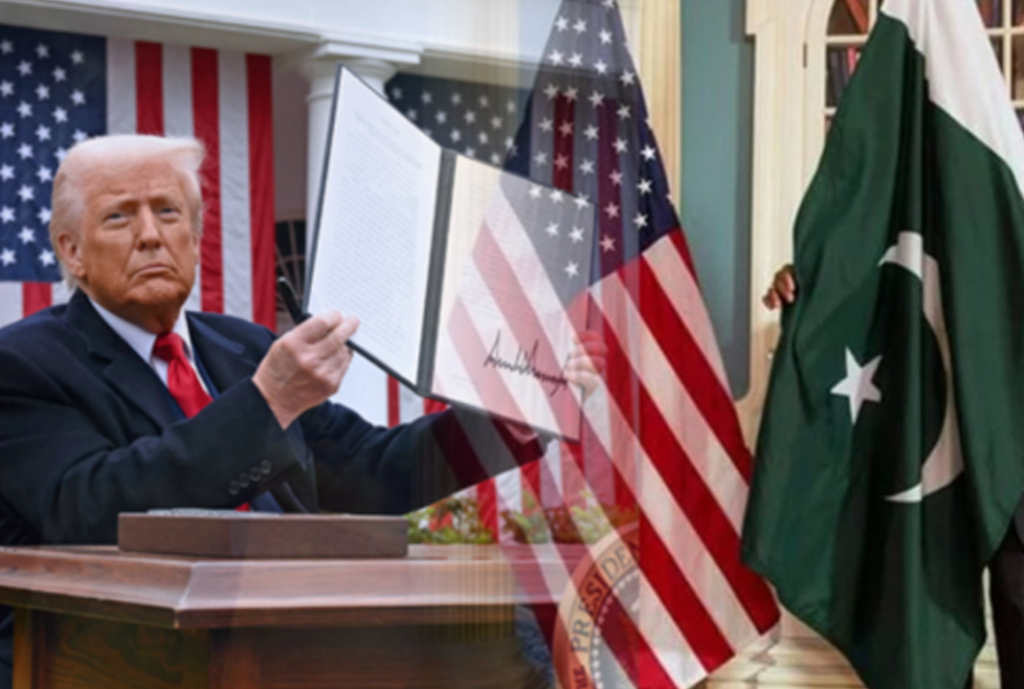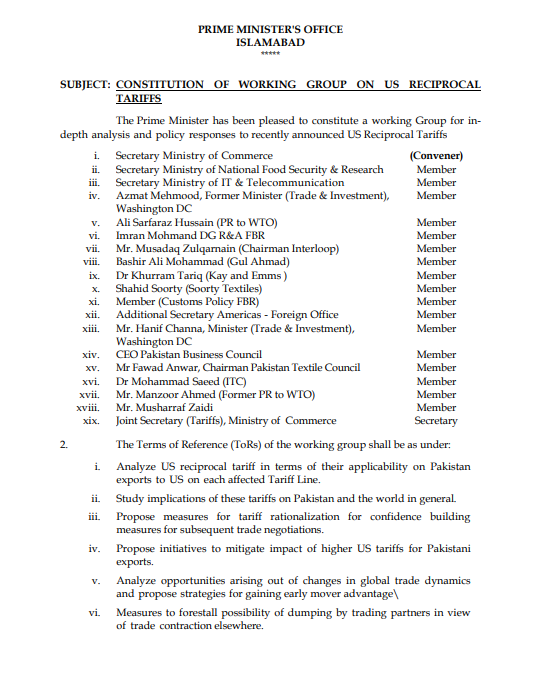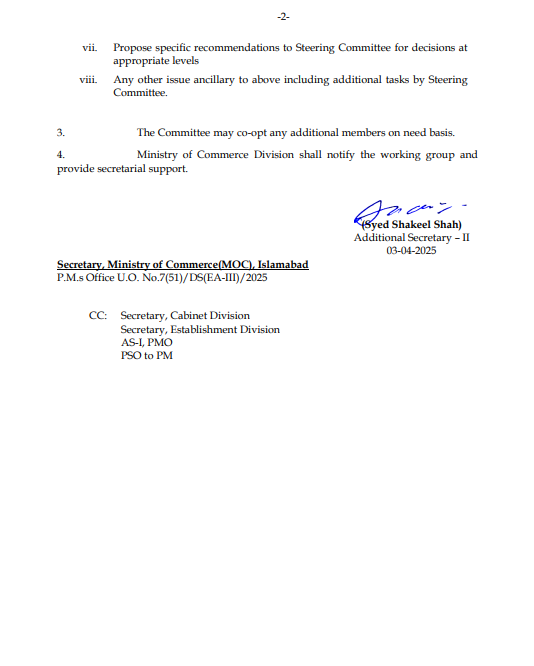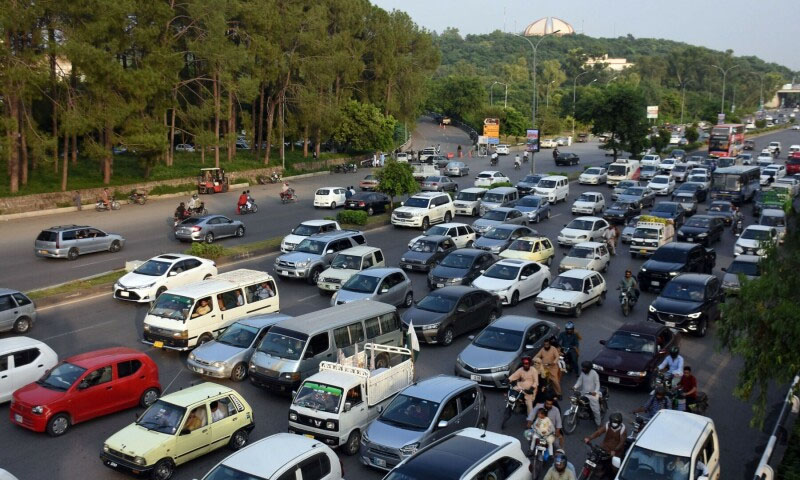- Web Desk
- 9 Minutes ago
Pakistan announce working group on policy response to US tariffs
-

- Syed Raza Hassan
- Apr 04, 2025

KARACHI: The Prime Minister on Friday constituted a working group to carry out in-depth analysis and propose policy responses to recently announced US reciprocal tariffs. Secretary Commerce will be the convener for the working group, according to a notification issued on Friday.
The local business community sees both hurdles and opportunities for Pakistan, after the United States imposes 29 per cent of reciprocal trade tariffs.
Pakistan to discuss tariffs the US following Trump’s announcement
The situation presents both challenges and possible advantages for Pakistan. In 2024, The country exported around $5.7 billion worth of goods to the US and 80-85 per cent of that was textile-related products such as garments, home textiles, and fabrics, Ismail Iqbal Securities noted in their research report “Pakistan Textile Industry at a Crossroads: Navigating US Tariff Changes.
“Recent US traffic increase on China (54 per cent), Vietnam (46 per cent), and Bangladesh (37 per cent) have created a unique opportunity for Pakistan, which faces reciprocal tariffs ar 29 per cent which can be brought to lowest tariffs by offering our domestic market for their products,” Gohar Ejaz, Chairman Economic Policy and Business Development Think Tank and former caretaker Industry Minister told Hum News English.
In FY24, we exported $16.7 billion in textiles and apparel of which $14 billion were value – added. Our total capacity is $25 billion, leaving $8 billion in unrealized potential. The US leather and footwear market, now affected by supplier tariffs, is another space Pakistan can enter, Ejaz went on to add.
South Asian nation textile exports will face a 29 per cent tariff in the US, which is high compared to many other countries. However, with the US now increasing tariffs even more on countries like China, Vietnam, and Bangladesh – Pakistan’s main competitors in textiles there could be a window of opportunity.
“If US buyers look for cheaper alternatives to avoid higher tariffs on Chinese and Vietnamese goods, Pakistan products may become more attractive,” Ismail Iqbal Securities stated.
Still, the overall situation is uncertain. The average tariff rate in the US has jumped from 2.5 per cent in 2024 to 22 per cent in 2025, the highest in over a century. This suggests a shift toward more protectionist trade policies that could hurt global trade volumes.
If American consumers start buying less due to higher prices or if supply chains get disrupted, Pakistan’s exports earnings could be affected despite having a relative advantage.
“Pakistan will need to respond swiftly by incentivizing and redirecting the import of select items from other countries to the US, while also rationalising and potentially lowering existing tariffs on US goods and addressing concerns about non tariff barriers,” Musadaq Zulqarnain, chairman at textile group Interloop wrote on social media platform X.
To clarify, Pakistan already maintains very low tariffs on most products and does not impose a 58 per cent tariff on US goods – this figure is a hypothetical projection based on a formula used by USTR, factoring in trade imbalance and other variables, Zulqarnain went on to add.
Trump’s trade war impacts Pakistan
“From what I understand, the government is actively working on a policy response in close consultation with the business community to protect and sustain Pakistan’s export access to the US market,” Musadaq Zulqarnain posted on X.
Pakistan’s exports are heavily concentrated in a few sectors, with making up over 60 per cent of total exports globally, not just to the US, the report maintains.
Any major shift in demand patterns or global slowdown could have a ripple effect on jobs, foreign exchange reserves, and industrial growth back home, Ismail Iqbal Securities report went on to add.






